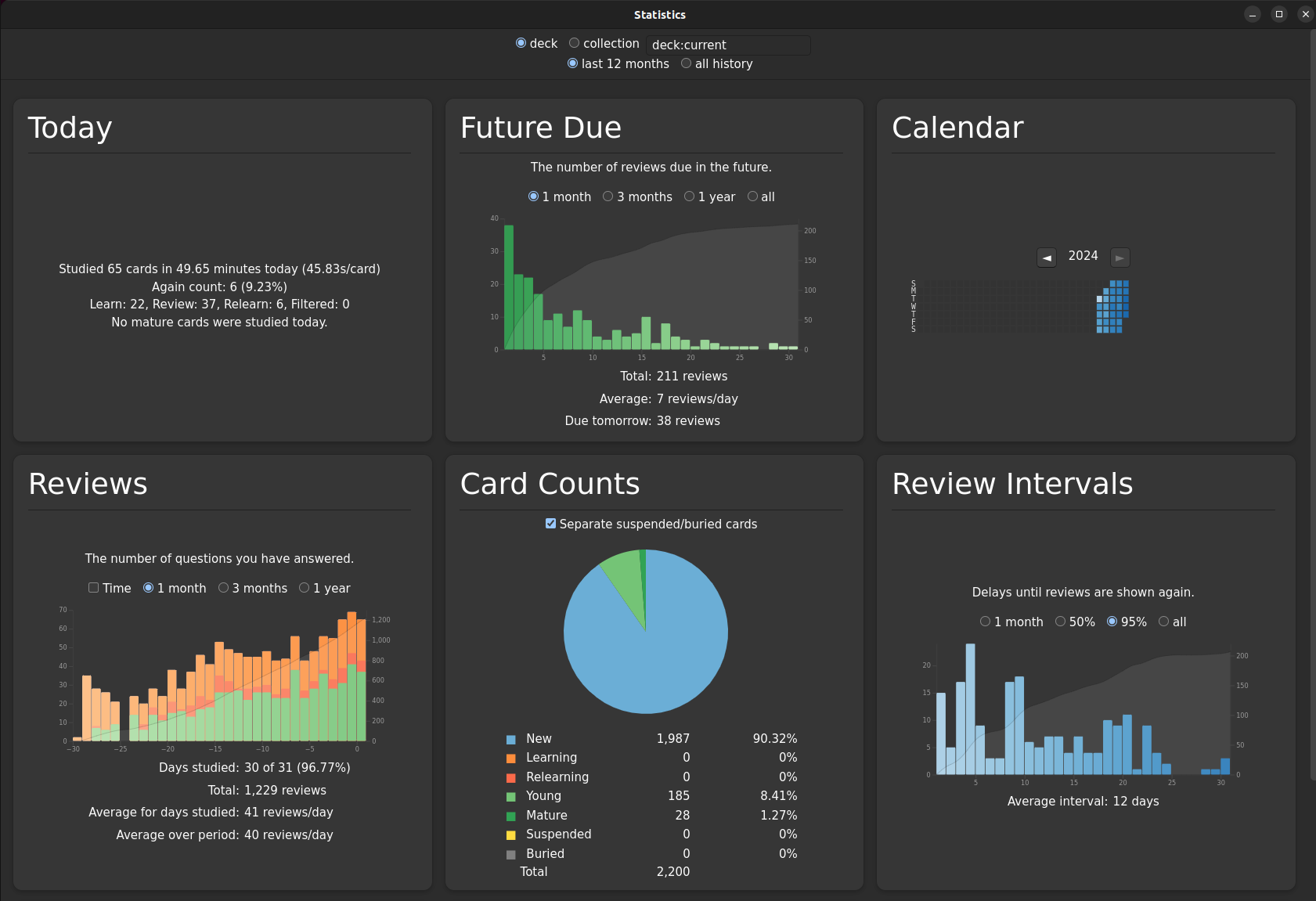My Kanji Journey: Insights After 200 Characters
Learning Kanji!
In the past month, I have dedicated 1 hour each day to open up Anki and learn new characters. In this article I will share the resource I am using and maybe list a few favorite characters from the first 200.
How To Start
I came across r/LearnJapanese study guides and I chose A Year To Learn Japanese. The guide is well-organized and covers everything I could think of that would help.
Using the guide, I have learned pronunciation and Kana which is a prerequisite to learning Kanji. Kana is also in the Japanese writing system, it consists of two parallel modern syllabaries (katakana and hiragana), there are about 46 characters in each syllabary, for a total of 92. After learning Kanji, what would be left is Grammar and Vocabulary before diving into language immersion such as reading, speaking, listening, writing.
Anki
Anki is a free open-source flashcard program. It uses spaced repetition and active recall testing to help a user memorize. It’s compatible with many devices, so you can learn anywhere!
How Does It Work With Kanji?
You start by reading the word, if you do not know it, you click show to learn about it. In the card there would be a story to help you remember what it stands for. You can also write your own stories. If you do know it, you have to try recalling what it looks like and then click show to confirm.
My deck also includes pronunciations. While I find some challenging to remember, words like ‘Mizu’ (水) for water are easy because I’ve encountered them in anime.
Finally, you have four buttons to press—Again, Hard, Good, and Easy—which determine when you’ll see the card again.
That is it, you just keep repeating this until you perfect your cards!
I enjoy it so far, it feels like a game and presents encouraging stats, including a heatmap like github to show your hard work!
My Approach
My guide recommended 3 approaches:
- Learn minimum amount and jump into Japanese content.
- Learn a considerable amount to have an easier time later.
- Somewhere in the middle.
After considering the options, I decided to learn a considerable amount of Kanji, choosing a deck with about 2,200 characters.
My Current Favorites:
- 貝: Shellfish! It can also stand for currency, money and a head? At least that is what I understood and it depends if it is used with other characters.
- The shellfish here is constructed by adding two characters together: eyes (目) + animal legs (ハ). I imagined a shellfish with an eye walking around the beach, something you would not expect, but I used it as a way to remember the character.
水: Water. I like it because it is unique and it turns to 3 drops when used as a primitive.
- 月: month, flesh, moon, part of body. I like it because it has many meanings. For example: 朋 means companion.
Conclusion
I am looking forward to the day where I see Japanese writing and I can at least make a good guess to what it means. So far I have learned quite a bit of history from learning Kanji through the characters themselves or the Japanese learning guide I am using. Well, I better sleep now because I have more Kanji to do in the morning. I wonder, will I make it till the end?
